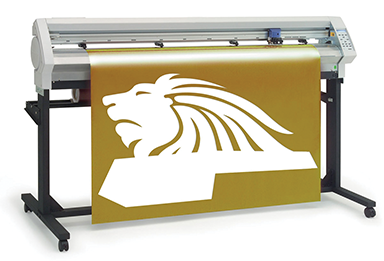By Glenn Feder
Digital printing is now well-established as the primary production method in the sign and graphics market, but it is being used in many different ways. The International Sign Association (ISA) recently released a new study conducted by InfoTrends, a document technology market research and consulting firm, in consideration of the importance of wide-format digital printing and dye sublimation to today’s sign and graphics industry. One of the goals was to determine which printing tools and technologies ISA’s members and other sign companies count on to conduct their daily business.
Specifically, the stated objectives of InfoTrends’ survey were:
- to develop an accurate picture of ISA member and non-member companies by size, production volume and other metrics.
- to understand how digital printing has been adopted within the sign industry.
- to examine the primary applications for wide-format digital printing and determine which are growing as a percentage of the sign and graphics industry.
- to measure the current wide-format digital printing and media ‘mix’ in terms of purchase volume and other criteria.
Respondent profile
The role of the respondents in this type of study affects both their responses and their ability to respond with reference to certain elements of the survey. In this case, the respondents overwhelmingly represented leadership positions at sign and graphics companies, including presidents, CEOs and owners (74 per cent); general managers (GMs), chief operating officers (COOs) and vice-presidents (VPs) of manufacturing (nine per cent); pre-press and production managers (eight per cent); and VPs of sales and marketing (six per cent). Only two per cent were information technology (IT) managers or chief technology officers (CTOs); and only one per cent of participants were in-plant managers.

In the 1990s, when shops made signs primarily by cutting vinyl, they needed to manage an inventory of different colours of film.
Another factor is self-identification. With the continuous evolution of the wide-format graphics market, many companies from other, traditional segments of the printing industry have entered the sign market over time, seeking business growth and higher profit margins by expanding their offerings. Hence, even ISA’s own membership now includes companies that do not refer to themselves as sign shops, but instead as ‘digital graphics print shops’ (15 per cent of survey respondents), as ‘digital printing specialists’ (five per cent) and with other print-focused nomenclature.
Most of the shops that responded are fairly small in terms of revenue and number of employees. More than 62 per cent of them list fewer than 10 employees and nearly 70 per cent report less than $1 million in annual sales.
The size of an average sign and graphics shop is an important factor in the dynamics of the industry. While all companies try to run efficiently, small shops are often more acutely affected when issues impact cash flow.






